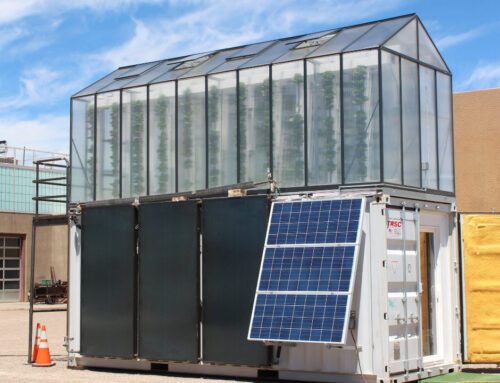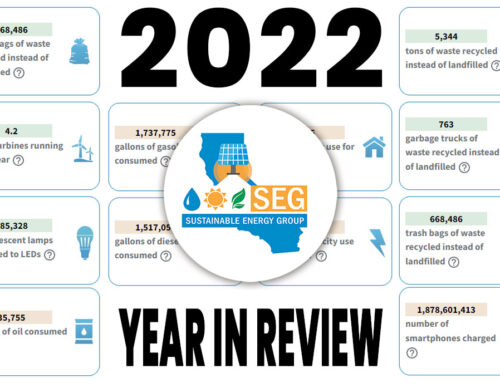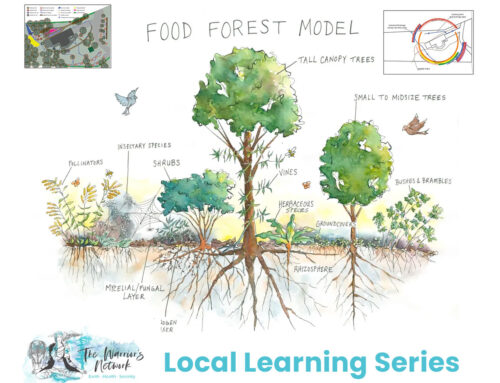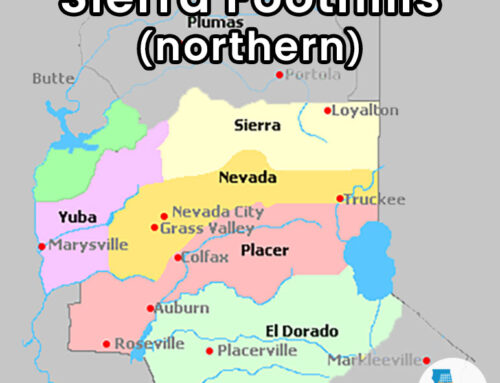*Local Learning Series written by botanist Lindsay Joy McLemore, founder of Wiggle Works in Nevada City, CA.
3 Ways to Incorporate Worm Composting Methods in the Sierra Nevada Foothills
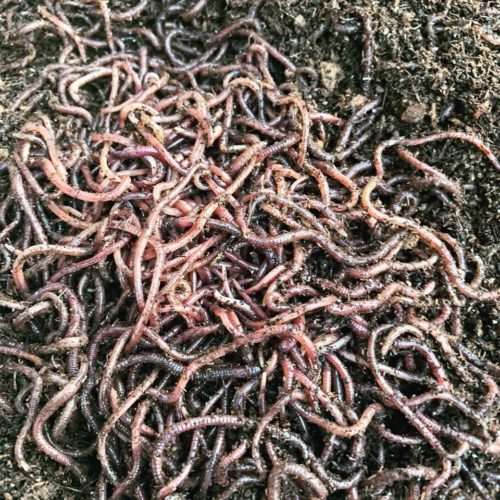


Have you ever been walking barefoot in the woods and felt the grounding energy of the Earth connecting the bottoms of your feet? I’ve been fascinated with this feeling ever since I was a small child — pulling my gaze down towards a flower on the ground and wondering how it got there, what made it grow, and what’s going on underneath of it all. This innate curiosity eventually led me to learn and love red wiggler composting worms and all of the essential roles they play in nutrient rich soil production.
A sustainable homesteading lifestyle can generate all of the ingredients necessary to maintain your worm population and build your own soil. Vermicomposting your organic waste creates an end product that improves overall soil health and fertility, improves water retention, increases the nutrient content and the concentration of microbial biodiversity. Vermicomposting neutralizes nutrient lock-ups in soils that may have been exposed to fertilizer, herbicide or pesticide. Worm activity naturally increases soil porosity and aeration by creating tiny tunnels for the roots to grow into. The ‘black gold’ vermicastings that are created are one of nature’s finest plant nutrients. They are 7 times richer in phosphates, 5 times richer in nitrogen and 11 times richer in potash than the average lawn soil. Each worm will produce their own body weight in vermicastings every single day when their habitat is just right. So, let’s get to how we can do our part to make more soil available for growing organic food and medicine by covering practical ways to incorporate composting worms into your Nevada County homestead.
Idea #1 : Grey Water System
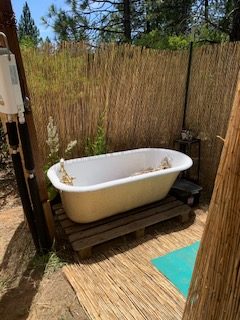


I’m currently building an outdoor bathing area just in time to cool down in the heat of summer. Since we all know how intense fire season can be in the foothills, I wanted to make the most of the grey water that will be produced. I selected a space that has about a 7% grade in order to build a tiered water catchment system. I have leveled a claw foot tub on a pallet. Going down the grade, behind the tub I will level a flexible water catchment tray. It will be leveled with fire fuel that has been cleared from the property. A raised bed will be built above the tray to house a vegetable garden which will be watered by the gray water draining from the tub. I will be adding a worm population to the fire fuel piles. This way, the worms and the grey water will help to compost the decaying fire fuel matter without the need to have an actual fire during hazardous seasons. Of course, you will want to use only organic plant-based soap. You will want to choose vegetables or plants that like some shade so that the worms will thrive here and churn the soap back into nutrients for your plants!
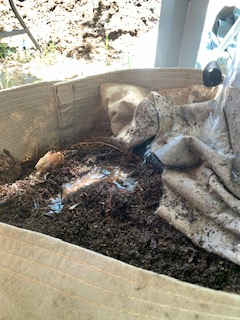


You can build a similar system anywhere you have grey water draining from your home or appliances. For example, I have placed a worm bed underneath my utility sink at the farm. This way the water is multiple use and recycled into the worm beds. Be sure to check the local permitting restrictions when building any structures.
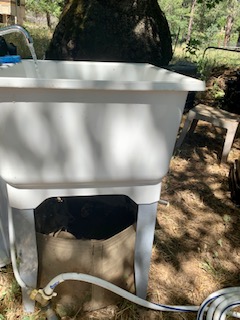


Idea #2: Composting Toilets
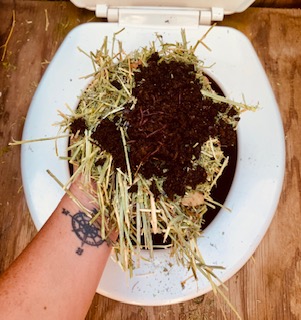

Many of us who choose to live off the grid are either already implementing the use of, or have thought about, composting toilets. They are typically inexpensive and require little or no water. Many new systems that are being engineered today, even septic systems, are actually being designed to incorporate composting worms. Could this be the way of the future? Adding composting worms to your system will dramatically increase the rate of decomposition and at the same time reduce odors. I use fresh hay as a filler, which is just perfect for creating the ideal condition for the worms to thrive while they are hard at work. Just grab a handful every few days to weeks and drop them in the hole!
Idea #3: Revitalizing Old Soil in a Smart Pot
During my 8 years here in Nevada County, I have helped hundreds of farmers revitalize old soil in smart pots. I have structured this technique specifically for organic craft-cannabis cultivation; however, you can do this to fit the needs of any plant species.
- Remove plant or leaf matter from the top of the pot and loosen the remaining soil

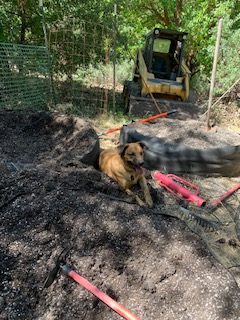

- Remove the top 1/5 of soil from the pot and save for another project
- Water in the old soil, while leveling it by creating a berm with the hose

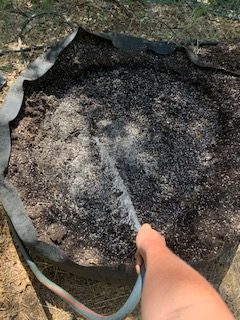

- When you are ready to transplant, coat the berm surface area with handfuls of matter from your Wiggle Works tote
(Alternatively, you can add amendments and worms from another source)
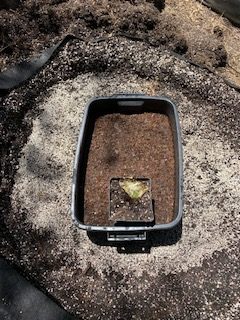


- Transplant your mature vegetable or flower start
- Fill with new soil to bury the berm and roots
- Water it! Really, really water it well.
If you have already transplanted, no worries. I suggest building a 2 in high x 1 ft wide berm of the live casting matter in a circle around the base of the plant and then watering it into your soil. You want to start your berm to cover the shadow of the leaf matter, as this is an indicator of where your root mass is stretching below the soil surface.
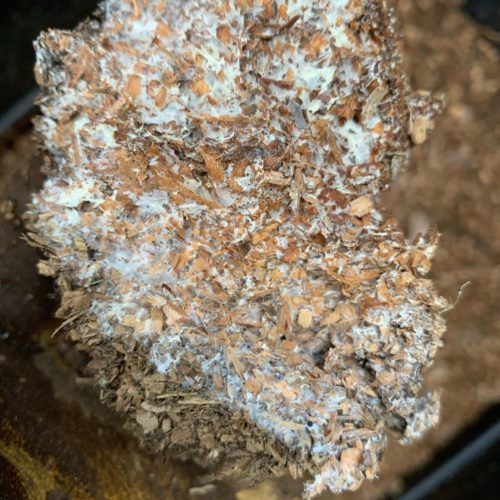


Caring for Your Worms
In order to get the most out of your composting worms, you will want to be vigilant in monitoring the worm bed environment. Water them every day like you would water a Beloved plant. Below are a few key indicators of a healthy, thriving worm population:
- The area smells earthy, not pungent and is free from flies
- The worms are active and below the surface, not dying
- The organic matter feed is visibly shrinking/composting
- The worms are not trying to escape or clustered in corners or on sides of their container
- The contents are moist but not drenched
- The worms will be red and have a lubricated coating of biosurfactant
- The ideal temperature range is 60-80° F
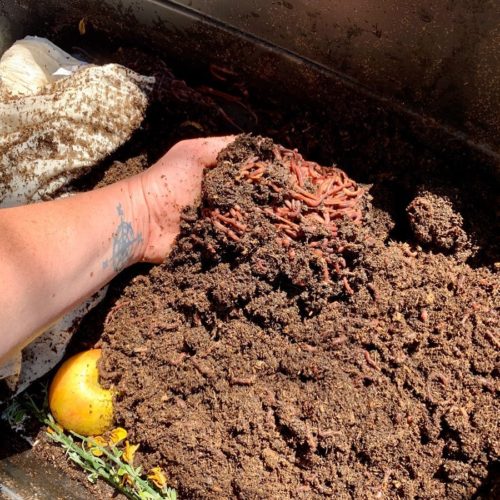


I choose to treat my worm beds as a ritual with the Earth. We are free from the use of fossil fuels, all work with the live castings is done by hand.
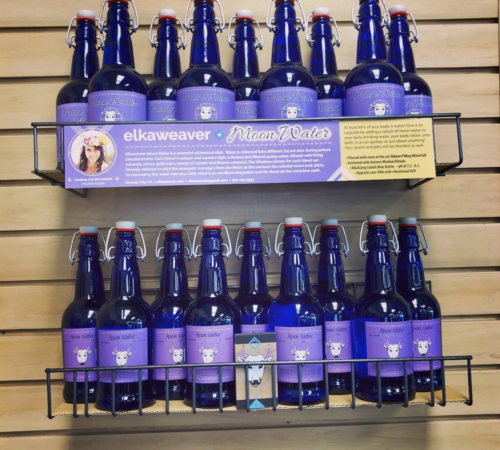


We even water the worms with moon waters collected from the local spring which is then infused with crystals, ormus gold and flower essences. You can read more about the homemade compost tea/garden charging moon waters on the Instagram page of our sister company, @elkaweaver. Or you can get creative with the ways you want to tune in and communicate with these incredible animals.
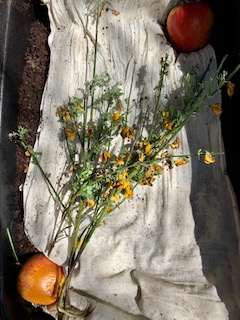


Because I am a practitioner of the healing power of flowers, I like to feed my worms very specifically. I do my best to feed them matter that contains fire hazardous compounds, such as scotch broom. I usually recommend not feeding them anything acidic, such as citrus or coffee grounds. The favorite meal for red wigglers consists of egg shells, lettuce or scraps such as basil, avocado rinds and watermelon.
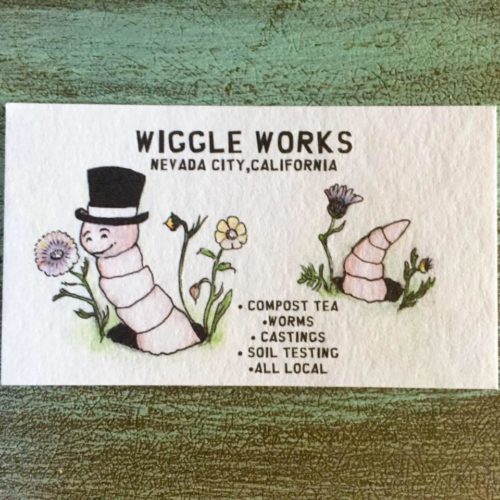


What makes Wiggle Works castings unique and super awesome is that they are ALIVE! I became so irritated 8 years ago when I started hearing of people paying a high price for a pound of worms that were mostly dead or not even mature. Or paying a ton for a yard of dry castings, often full of rocks or even trash. Why separate the castings when you can add all the life stages of the composting worm along with their super nutritious castings and naturally occurring fungi? The totes also contain chunks of mycelium and also a bit of organic matter to feed the worms until they are ready to go on your plants or garden bed. Get in touch and start your own worm farm today.
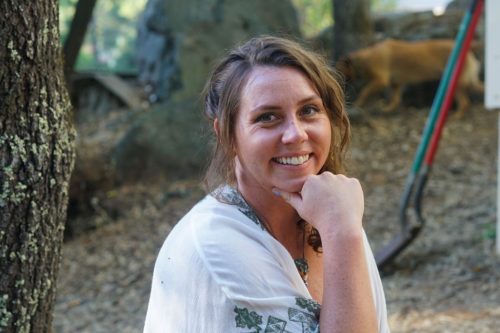


Lindsay Joy McLemore is a local Botanist specializing in Flower Essence Therapy and the Founder of Wiggle Works, a red wiggler worm and live casting farm in Nevada City, CA. She graduated from the University of Florida with a BS in Botany and also attended University of South Florida and Pennsylvania State University for post-graduate research before moving to the foothills in 2013. The focus of her studies includes plant genetics, epigenetics, geographic information systems and soil microbiology. Lindsay has been serving the Nevada County area organic soil amendments for the past 8 years. She is passionate about organic farming, access to organic food, and medicine for all, and creating high quality soil that makes all of this possible. She lives in a sustainable community with her dog, Tusk, on the North San Juan ridge.
www.facebook.com/wiggleworks1/


